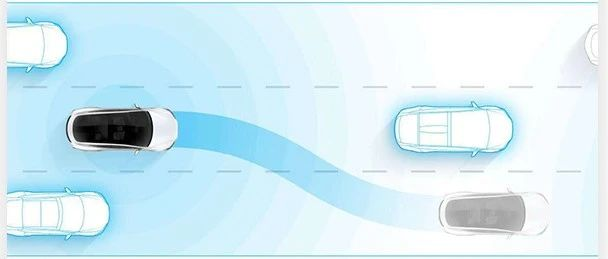Summary in one sentence
Currently, Tesla’s Autopilot in China has two versions: Standard Version and Enhanced Version.
AP – Tesla’s Basic Autopilot – Features cruise control, lane keeping with a blue double line displayed on both sides of the car when activated, and the ability to follow the vehicle in front, change lanes with the driver signaling and exit the lane only when the driver indicates intention. AP does not allow lane changes on/off ramps nor automatic passing. This feature is complimentary to all vehicles.
EAP – Tesla’s Enhanced Autopilot – Includes all features of the AP plus the ability to automatically change lanes without the driver signaling and exit highways. This feature is available through a paid upgrade and displays a single blue line in the center of the lane.
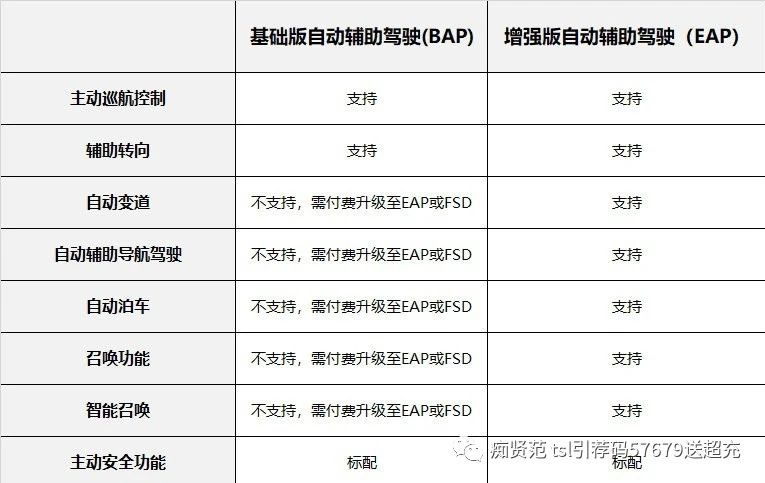
AP – Tesla’s Basic Autopilot
1. What is AP?
AP is Tesla’s Basic Autopilot (BAP), which includes cruise control, lane keeping with the ability to follow the vehicle in front, and turn according to the car’s lane markings while maintaining a safe following distance. The vehicle will slow down when there is a cut-in and speed up when the vehicle in front moves aside. AP is a complimentary feature to all Tesla vehicles.
When the vehicle slows down, the brake pedal will automatically be applied, but the accelerator pedal will not move when the vehicle accelerates.
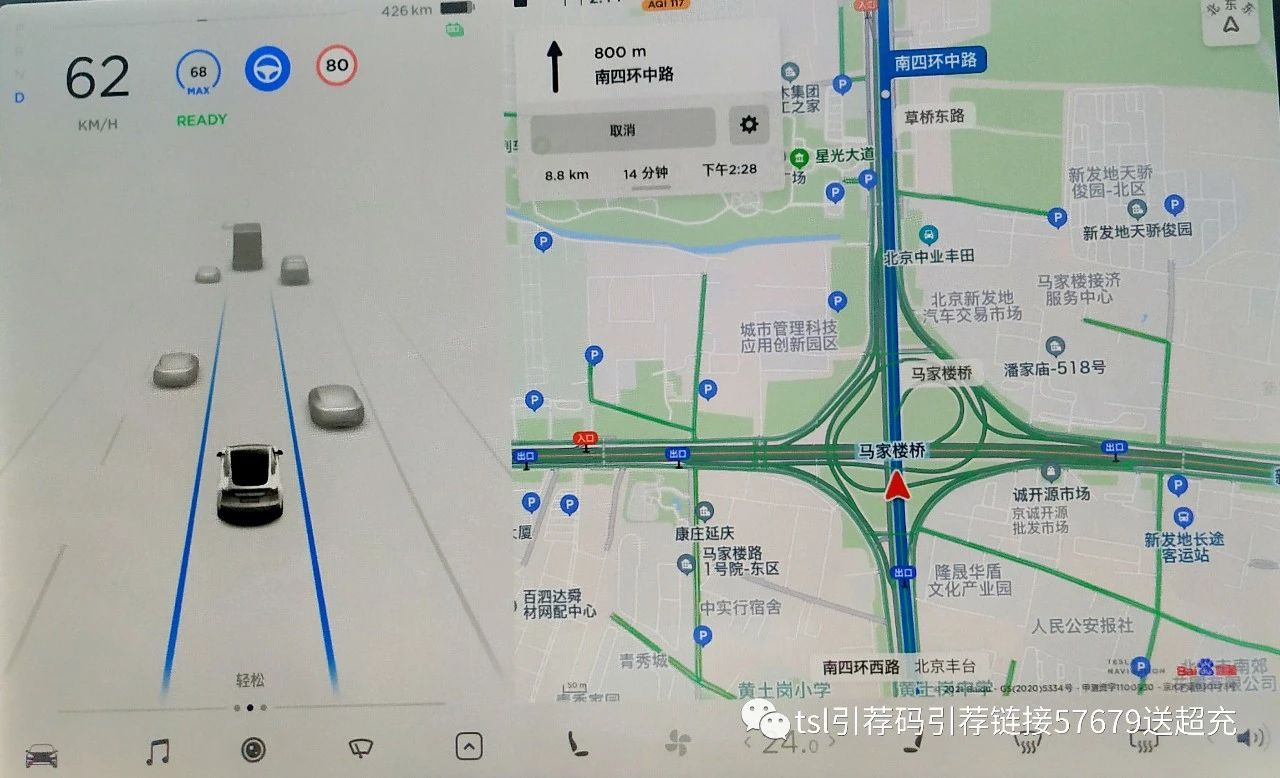
2. How do you activate AP?
After engaging navigation, on city loops and highways where there are no traffic signals, simply pull the right-hand stalk down twice to activate AP. A blue double line will appear on both sides of the car. Without ordering EAP, when the driver signals to change lanes, they must exit AP until the blue line disappears. As long as EAP is active, the driver can change lanes by simply signaling left or right without touching the steering wheel. During the holiday and a test on the highway yesterday, changing lanes did not exit AP.
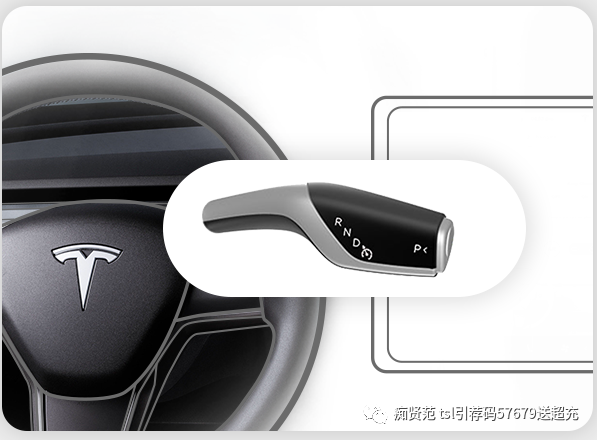
3. How do you exit AP?
Lightly apply the brake or push the right-hand stalk up to exit AP, it’s that easy! When exiting by applying the brake, the vehicle will decelerate and the driver will need to apply the accelerator pedal promptly. Therefore, it is recommended to push up the right-hand stalk to exit after the drive’s foot returns to the accelerator.
4. How do you adjust the speed limit and following distance?Adjust speed limit up and down with the right scroll wheel: slow dial adjusts by 1 km/h, fast dial adjusts by 5 km/h. When “set speed” equals “current speed,” press and hold the right lever down for 2 seconds, or click the speed limit sign, to adjust to the “speed limit” and conform to the road speed limit.
Adjust following distance with the right scroll wheel: the minimum value is 1 and the maximum value is 7. Turning the right dial will decrease the following distance, while turning the left dial will increase it. The range of 1-7 is a measure of time, not actual distance. It refers to the time needed to travel from the current position to the front car’s rear bumper at the current speed.
5. Three Disadvantages and Shortcomings
- Even when the following distance is set to the minimum value of 1 while driving on a ring road, the distance from the front car is still too far, farther than the normal following distance.
- After AP stops in traffic, there is a delay of 2-3 seconds when restarting which can cause honking from trailing drivers and may result in cars cutting in.
- When vehicles traveling in adjacent lanes do not use their turn signals when crossing lines, AP may not automatically avoid them and will exit automatically. In this case, exiting AP aggressively should be careful.
EAP — Tesla’s Enhanced Autopilot
1. What is EAP?
Tesla’s Enhanced Autopilot (EAP) includes active cruise control, which adjusts speed to follow the front car, lane-changing, auto-flashing when passing on the left, and auto-routing entering/exiting ramps and changing highways. When following a front car, it automatically decelerates to avoid cutting in or other dangers. When there is no front car, it drives at the designated speed, and when the speed of the front car is too low, it can automatically pass it.
Before reaching an exit ramp on a highway, Tesla will activate the turn signal to gradually move the car to the rightmost lane, then, either continue to follow navigation into the exit ramp, or enter another highway.
This feature costs ¥32,000 to purchase and is currently free until June 15.
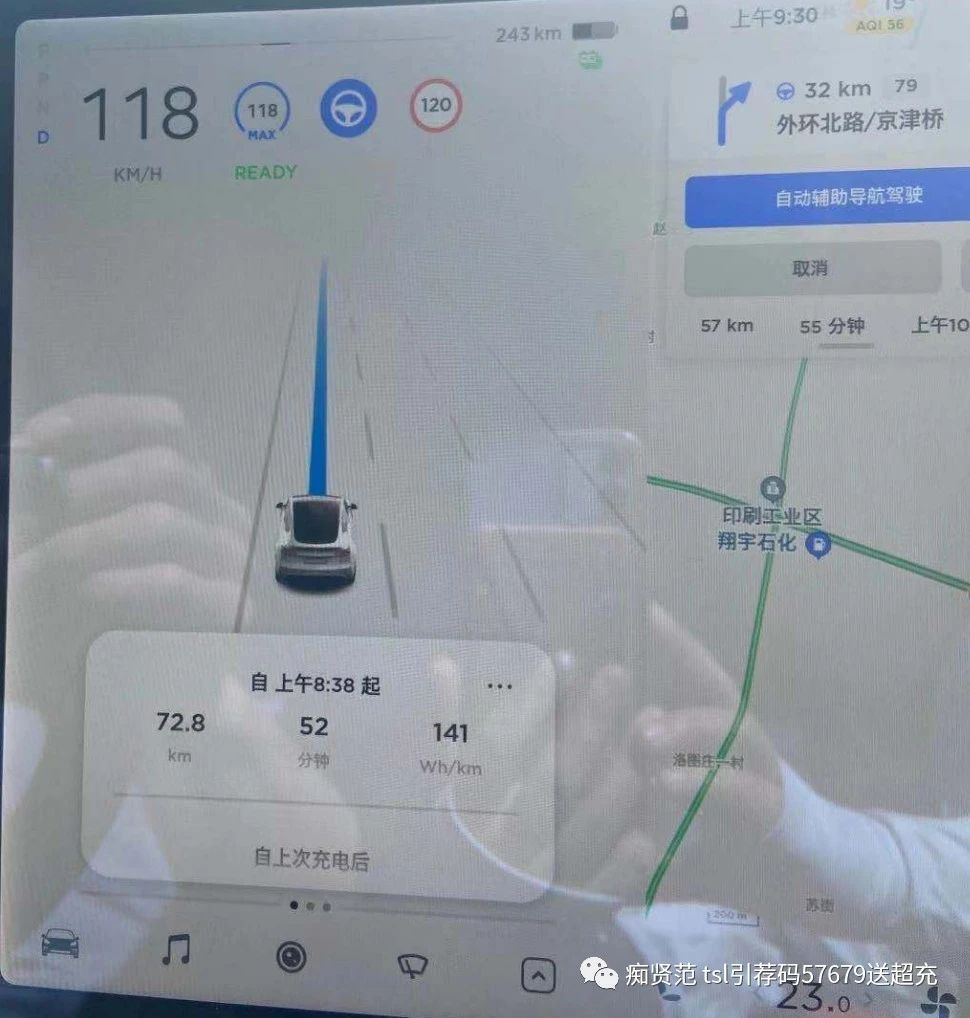
2. How to Activate EAP?
After activating the navigation feature, on closed roads without traffic lights such as urban rings or highways, flick the right gear shift lever down twice in quick succession to activate AP, then press the “Autopilot Navigation Assistance” button on the screen. A blue line will appear in the middle of the lane indicating that Enhanced Autopilot has been successfully activated. It is satisfying to be able to temporarily free up both hands on long highway trips; autonomous lane changes and passing are also a pleasure and can greatly reduce driving fatigue!
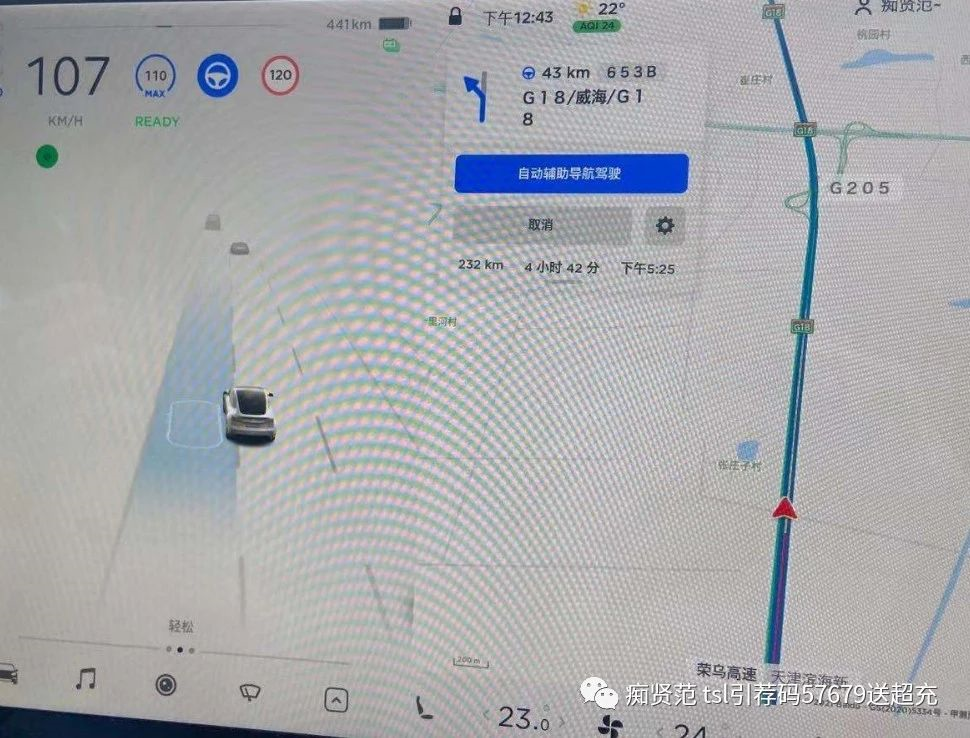
3. How to Quit EAP?### 6 Important recommendations
-
Safety first! No matter whether you are using AP or EAP, both are just “automated assistance driving”. The key point is “assistance”. Do not overly rely on AP/EAP, and always prioritize safety when using it: Keep your hands on the steering wheel, avoid using mobile phones, keep your eyes on the road, and be vigilant at all times.
-
AP/EAP can be used on circular and highway sections with moderate traffic flow and sufficient light, and clear lane lines. You should handle on-ramps and off-ramps on your own, as well as lane merging and splitting. For example, when turning on AP/EAP, switch to the first or second lane on the left or the far right lane, but avoid the third lane on the left that splits off, as illustrated in the figure below.
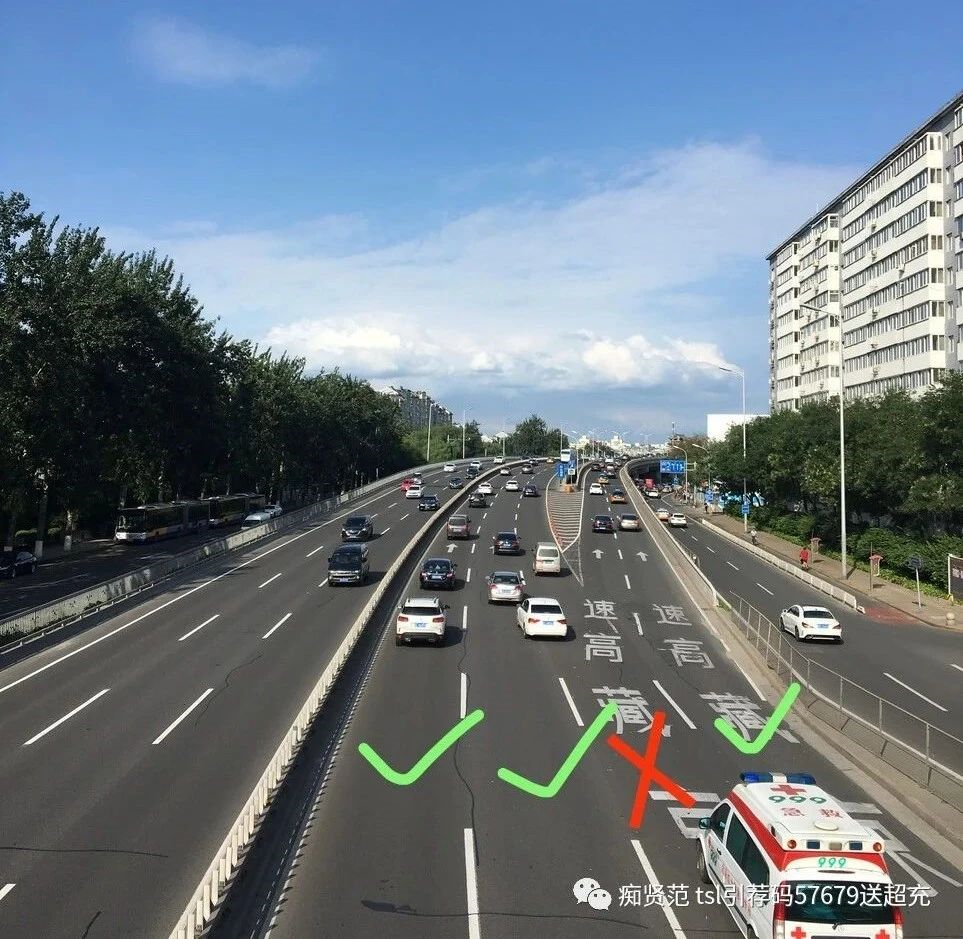
- Set the “Set Speed” of the Tesla when activating AP/EAP to “Current Speed” rather than “Speed Limit”. When set to “Speed Limit”, the Tesla will activate AP/EAP at the current road limit or maximum speed. If the current speed is much lower than the speed limit, the vehicle will accelerate rapidly, resulting in the infamous “phantom acceleration”.
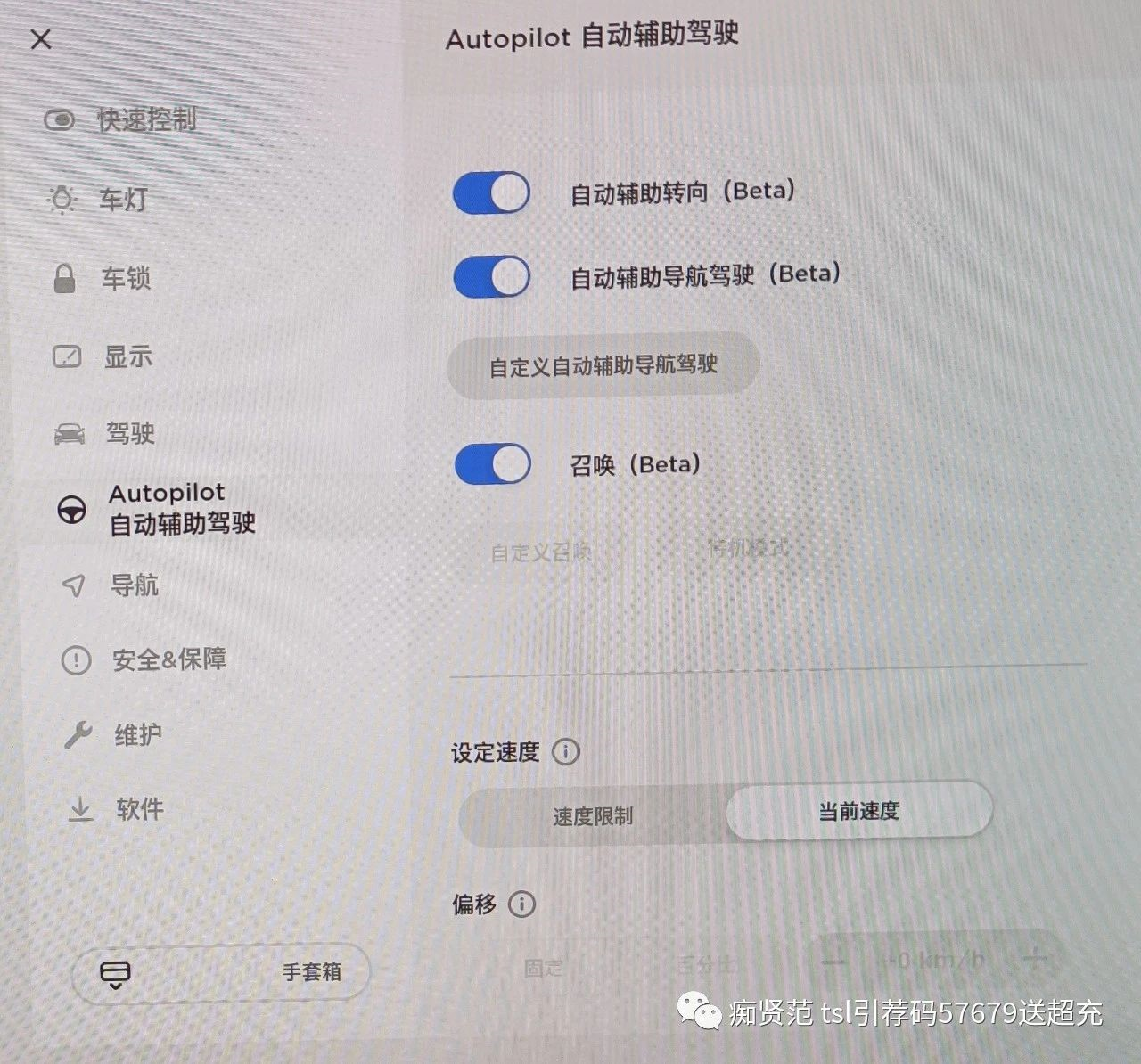
-
After enabling AP/EAP for some time, even if your hands are on the steering wheel, the screen above will turn blue and flash, indicating that you need to gently turn the steering wheel to continue automated driving. At this point, you can use the left or right scroll wheel to continue using AP/EAP. However, it is still dangerous to turn the steering wheel while driving at high speeds.
-
It is recommended to set the “Enable Auto-Assist Navigation Driving when starting the car” to “No”. If set to “Yes”, AP/EAP will automatically start every time you begin navigation, which is too aggressive. It’s safer to turn on AP/EAP yourself based on the road conditions.
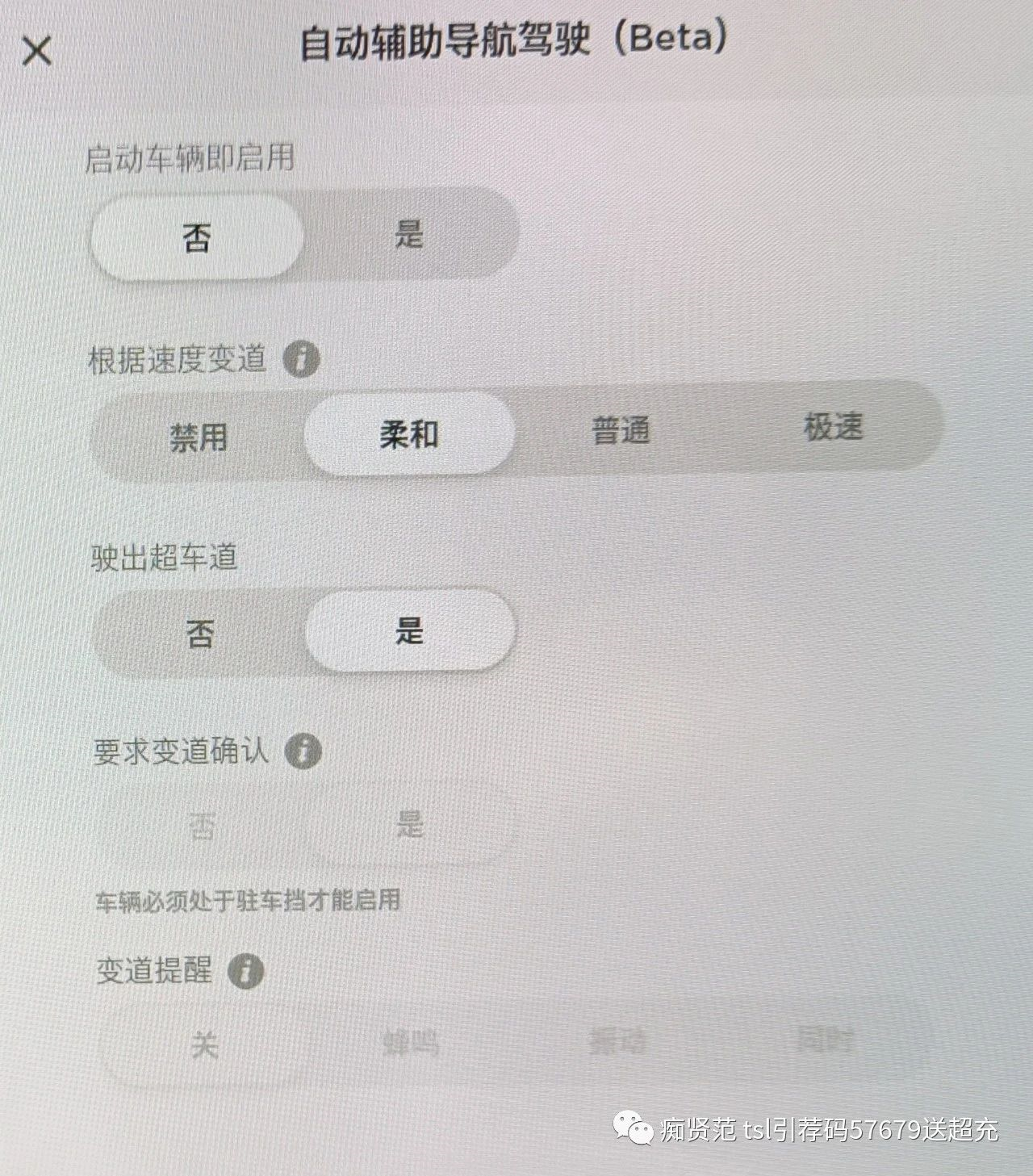 6. It is recommended to set “Lane Change Confirmation” to “Yes” for “Autosteer Navigate on Autopilot.” After selection, Tesla will prompt that a lane change is about to take place before implementation. Only after the turn signal is used and the driver confirms, will Tesla implement the lane change. This makes the lane change safer. If set to “No,” even if “Mild” lane change is selected, EAP will still frequently autonomously signal and change lanes to overtake. Therefore, during the valid period of EAP, I still prefer to use AP to change lanes and overtake: I signal, it changes lanes, I signal again, it changes lanes again! Whether to overtake and when to overtake are all under control, and one’s own life path is not influenced by Tesla. When EAP expires and AP is used for overtaking, the driver can signal to change lanes and automatically exit AP to Autopilot, then AP can be re-enabled, or continue driving without changing lanes.
6. It is recommended to set “Lane Change Confirmation” to “Yes” for “Autosteer Navigate on Autopilot.” After selection, Tesla will prompt that a lane change is about to take place before implementation. Only after the turn signal is used and the driver confirms, will Tesla implement the lane change. This makes the lane change safer. If set to “No,” even if “Mild” lane change is selected, EAP will still frequently autonomously signal and change lanes to overtake. Therefore, during the valid period of EAP, I still prefer to use AP to change lanes and overtake: I signal, it changes lanes, I signal again, it changes lanes again! Whether to overtake and when to overtake are all under control, and one’s own life path is not influenced by Tesla. When EAP expires and AP is used for overtaking, the driver can signal to change lanes and automatically exit AP to Autopilot, then AP can be re-enabled, or continue driving without changing lanes.
This article is a translation by ChatGPT of a Chinese report from 42HOW. If you have any questions about it, please email bd@42how.com.
